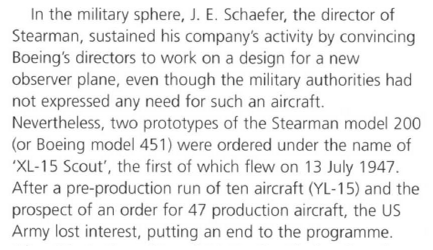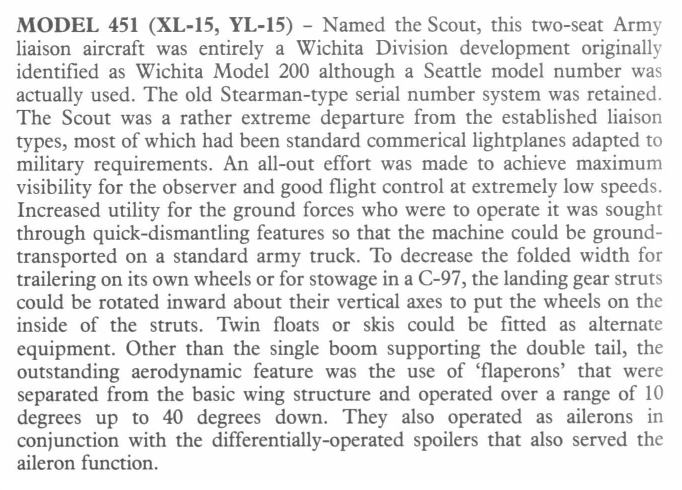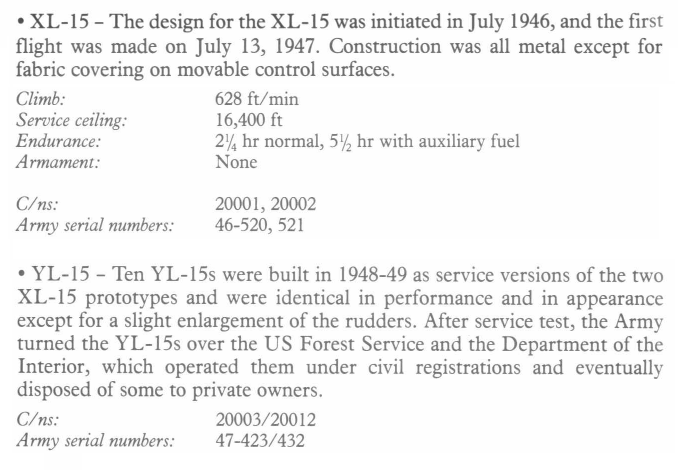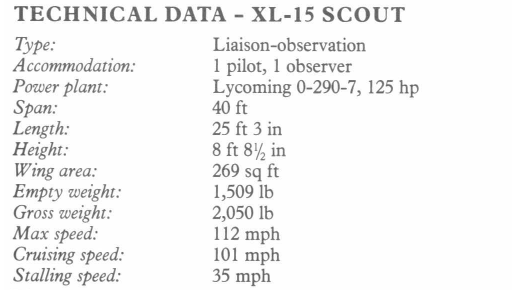- Joined
- 25 June 2009
- Messages
- 14,733
- Reaction score
- 6,074
Everyone knows this oddball observation aircraft, and yet it never had a dedicated topic here until today.
The Boeing Wichita (formerly Stearman division) Model 200 "Scout" was also known as the Model 451. It was a high-wing, single-engine all-metal two-seater, with conventional gear. The inverted vertical stabilizer was meant to provide good spin damping and to reduce the overall height of the airplane. The rudder and elevator were fabric-covered. The configuration chosen provided maximum visibility for the observer and good flight control at low speed. It could also be disassembled and transported by truck.
The Model 451-2 was presented on March 1, 1946 by Boeing in response to a letter dated February 4 from Colonel George E. Price of the A.T.S.C., announcing an informal design competition for a field artillery observation aircraft, and requesting bids. The program received the designation MX-848.
Boeing received an order as per contract W33-038-ac-15054. Two XL-15 prototype was built and ten more YL-15 preseries aircraft followed, but on completion of the test phase, the Army rejected the design. The ten YL-15s were consequently transfered to the U.S. Forest Service and the Department of the Interior, which operated them with civil registrations.
As a result, the subsequent order for 47 production L-15-BW aircraft was cancelled.






The Boeing Wichita (formerly Stearman division) Model 200 "Scout" was also known as the Model 451. It was a high-wing, single-engine all-metal two-seater, with conventional gear. The inverted vertical stabilizer was meant to provide good spin damping and to reduce the overall height of the airplane. The rudder and elevator were fabric-covered. The configuration chosen provided maximum visibility for the observer and good flight control at low speed. It could also be disassembled and transported by truck.
The Model 451-2 was presented on March 1, 1946 by Boeing in response to a letter dated February 4 from Colonel George E. Price of the A.T.S.C., announcing an informal design competition for a field artillery observation aircraft, and requesting bids. The program received the designation MX-848.
Boeing received an order as per contract W33-038-ac-15054. Two XL-15 prototype was built and ten more YL-15 preseries aircraft followed, but on completion of the test phase, the Army rejected the design. The ten YL-15s were consequently transfered to the U.S. Forest Service and the Department of the Interior, which operated them with civil registrations.
As a result, the subsequent order for 47 production L-15-BW aircraft was cancelled.


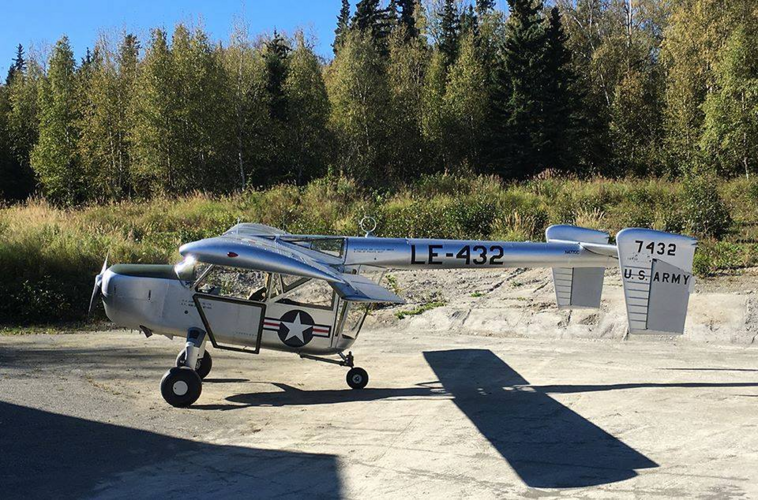
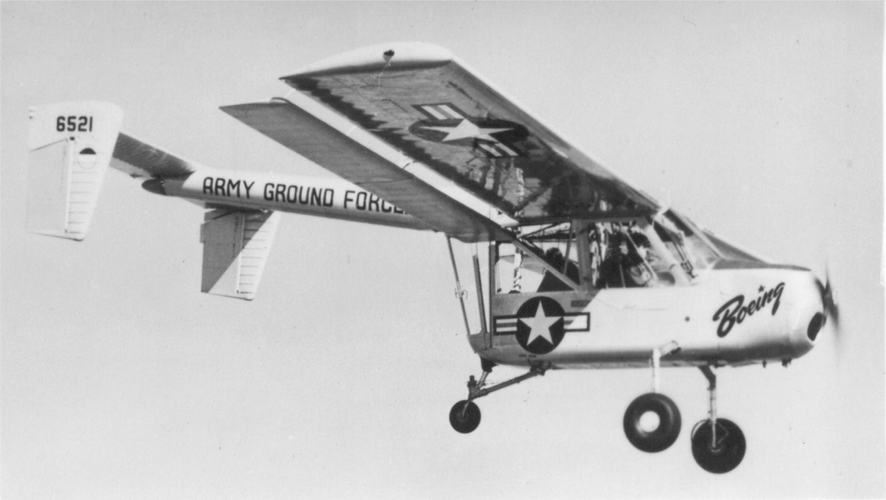
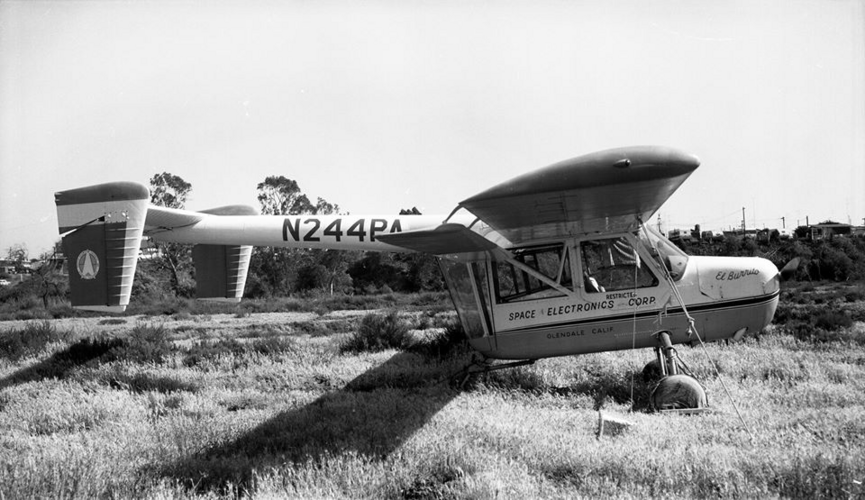
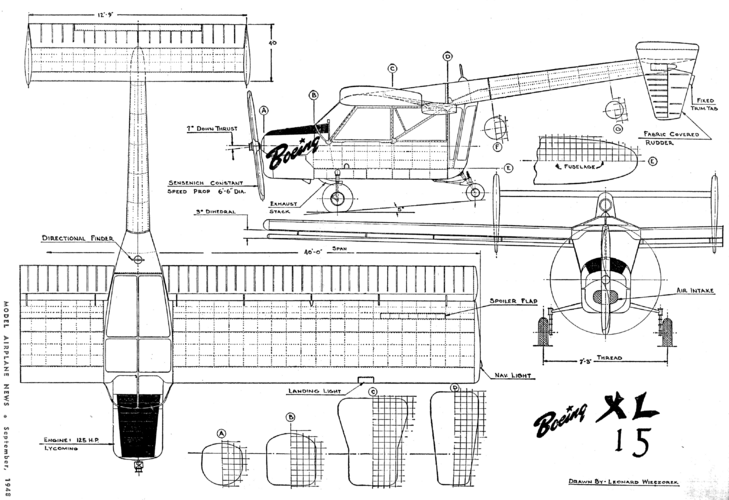
Last edited:

